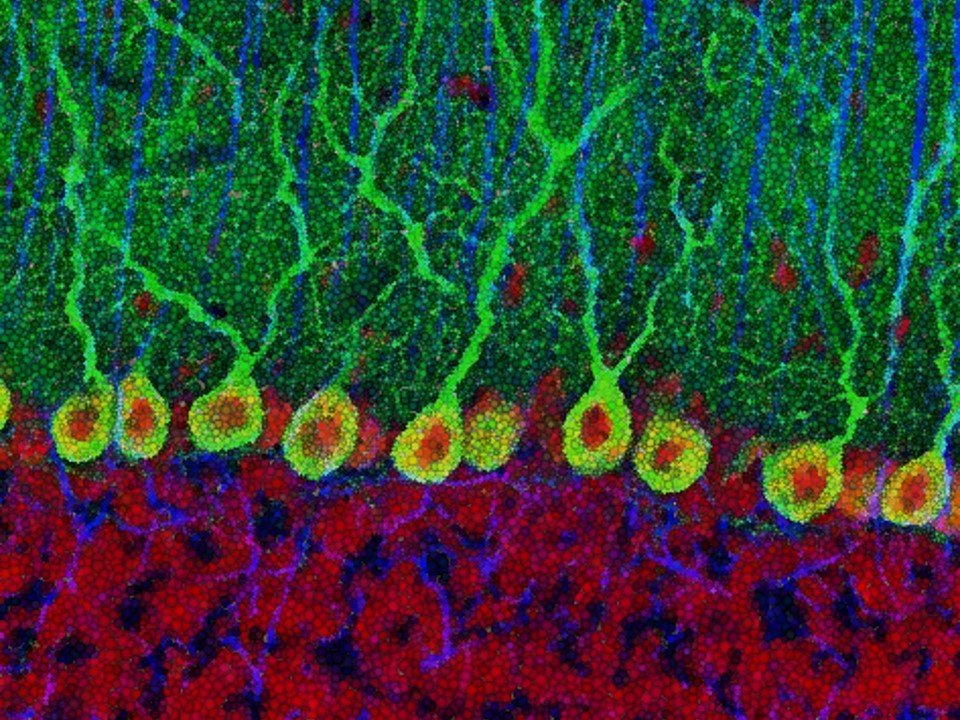
HSIAO LAB
Laboratory of Brain Circuits & Development
at Children’s National Research Institute
Neuroscience Research at Children's National Research Institute is a cutting-edge facility located in the vibrant city of Washington, DC. As a leader in the field of neuroscience research, our mission: To understand the intricate workings of the brain and enhance the lives of children and adolescents. The state-of-the-art facilities and a team of highly skilled researchers create an environment that fosters collaboration and innovation. With access to advanced technologies and a diverse patient population, the researchers at this institute are able to conduct groundbreaking studies that have the potential to pave the way for prevention, recovery, and cure.
JOIN US! WE ARE HIRING!!
The development of these intricate projections is paramount for processing and responding to daily cognitive tasks, ensuring coordinated and organized actions. However, a critical knowledge gap remains regarding the developmental regulation of the cerebellothalamic circuit and its profound impact on neurocognitive dysfunction. We are poised to address this critical gap and pave the way for revolutionary therapeutic interventions.
During the critical period of cortical maturation, an intricate network of connections is meticulously constructed between the thalamus and the cerebellum. However, cerebellar dysfunction during this delicate phase can disrupt this intricate tapestry, leading to altered development and dysfunction of cortical targets. To unravel the complexities of neurological disorders, we must delve into the depths of in situ thalamic circuitry, as well as cerebellothalamic and thalamocortical circuitries.
Embark on a groundbreaking journey to unlock the mysteries of the cerebellum's profound influence on neurocognitive development
Activity-dependent neurodevelopmental processes play a pivotal role in shaping cortical maturation. The cerebellum, a maestro of cognitive orchestration, relays a symphony of excitatory signals to the thalamus and the forebrain. When this finely tuned instrument falls out of sync, cognitive deficits can emerge, casting a shadow over an individual's ability to navigate the complexities of daily life.
Children with Down syndrome (DS) face a constellation of developmental challenges, including significant deficits in balance and fundamental movement skills. While cerebellar hypoplasia and granule cell loss have been implicated in these motor impairments, the precise mechanisms remain elusive.
Unveil the Hidden Mechanisms Behind Motor Skill Deficits in Down Syndrome
Previous rodent models have yielded limited insights due to phenotypic drift, microglial overactivation, and mosaicism. However, the advent of MAC21 mice, a novel humanized transchromosomic model, offers an unprecedented opportunity to unravel the intricacies of DS-associated motor deficits.
Our compelling research has uncovered distinct behavioral and anatomical alterations in MAC21 mice, revealing disrupted Purkinje cell connectivity and premature Purkinje cell differentiation. By employing a modified chemogenetic tool, we will meticulously dissect the cellular trafficking pathway associated with primary cilia dysfunction and its impact on motor learning behavior. Our groundbreaking study will provide critical insights into the cerebellar circuitry underlying DS-associated movement adaptation deficits.
Our planet is in peril, and the rising tide of extreme heat events threatens to engulf us in a wave of chaos and dysfunction. As temperatures soar, our minds become clouded, our judgment impaired, and our very behavior distorted. Violence and aggression escalate, while focus and productivity plummet, leaving us vulnerable and unproductive.
The science is clear: heat is not just an inconvenience; it's a menace to our mental well-being and our ability to thrive. Yet, despite the alarming implications, we remain woefully ignorant of the underlying neural mechanisms that fuel these heat-induced mental impairments.
The Scorching Grip of Extreme Heat: A Looming Threat to Our Minds and Behavior
Neuroscience, with its focus on circuitry and systems-level analysis, holds the key to unlocking the secrets of heat's impact on our minds. By dissecting the neural pathways involved in attention, impulsivity, and other cognitive processes, we can gain a deeper understanding of how heat disrupts these functions.
By delving into the circuitry and systems-level processes of the brain, we can develop comprehensive models that predict how extreme heat disrupts our cognitive abilities, particularly sociability and mental flexibility. By understanding the neural underpinnings of heat's impact, we can tailor strategies to protect individuals from the cognitive impairments and emotional turmoil that extreme heat can inflict.


